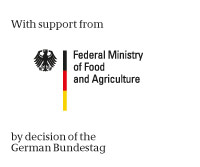Nature conservation in German forests
 |
Up to 10,000 animal and plant species – and about 72 tree species - inhabit the native forest, forming a complex community. A spoon full of forest floor is home to more organisms than people living on the earth. About 90 percent of German forests are protected or fulfil important protective functions. Quite a few are under nature conservation law such as national parks and nature reserves and areas according to forest law such as water and soil conservation forests. There are also areas that belong to the European Flora-Fauna-Habitat Directive (FFH). This is part of the protection concept "Natura 2000". The German FFH-areas overlap with protected areas for nature conservation and forestry law. Overall, nationwide they make up to ten percent of the land. The proportion of forest is about 60 percent.
 |
While forest management in protected areas is hardly limited conservation goals have priority function in other areas. In national parks or nature reserves, all other uses are subordinate to the protective purpose. The proportion of not-used-forests should be five percent of the forest area according to the "National Strategy on Biological Diversity" 2020. Nearly 330,000 ha (3% of the total forest area of 11 million ha) are already not used today or in medium term. Development zones of national parks or other protected areas have not been included in the balance sheet.
The modern forest management promotes biodiversity and improved their status. The native forests have reached 81 percent of the highest attainable value of the best sub-indicator value of all land uses. The promotion of semi-natural forest management by federal and state governments and the high degree of responsibility of forest owners show significant results.






